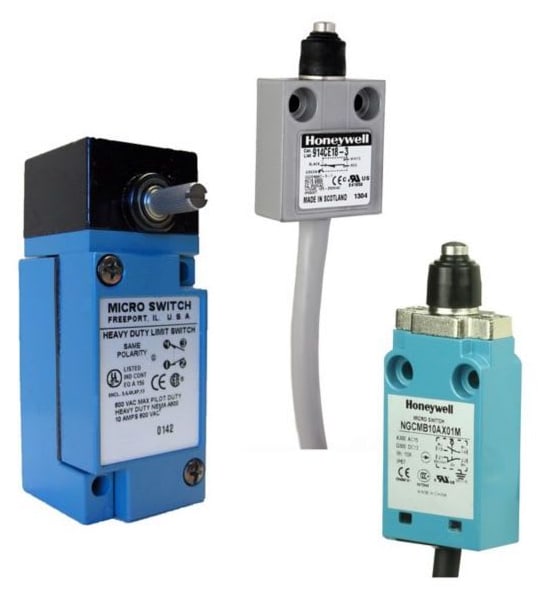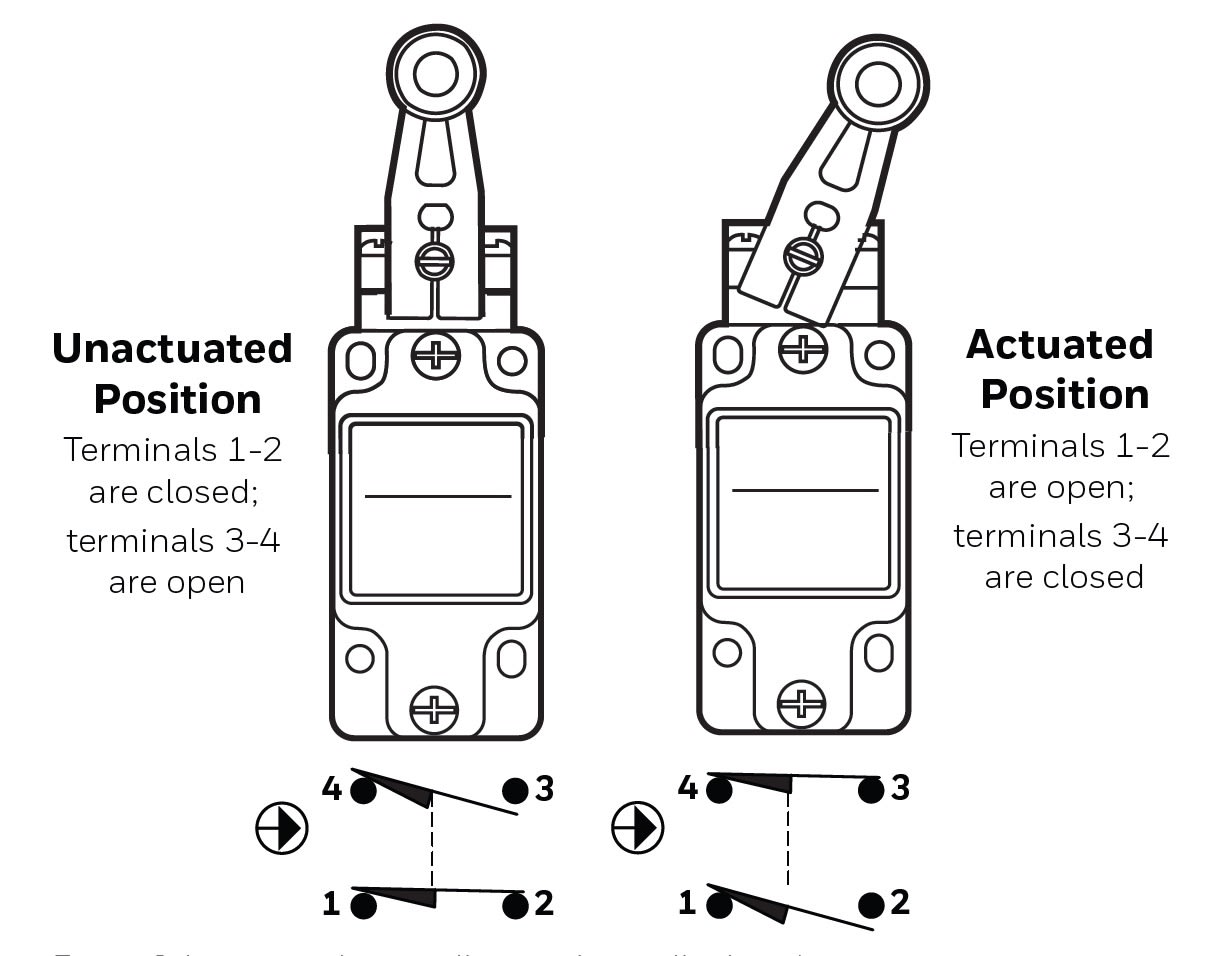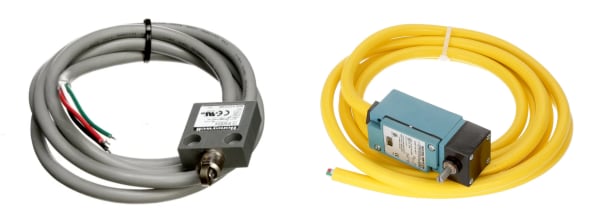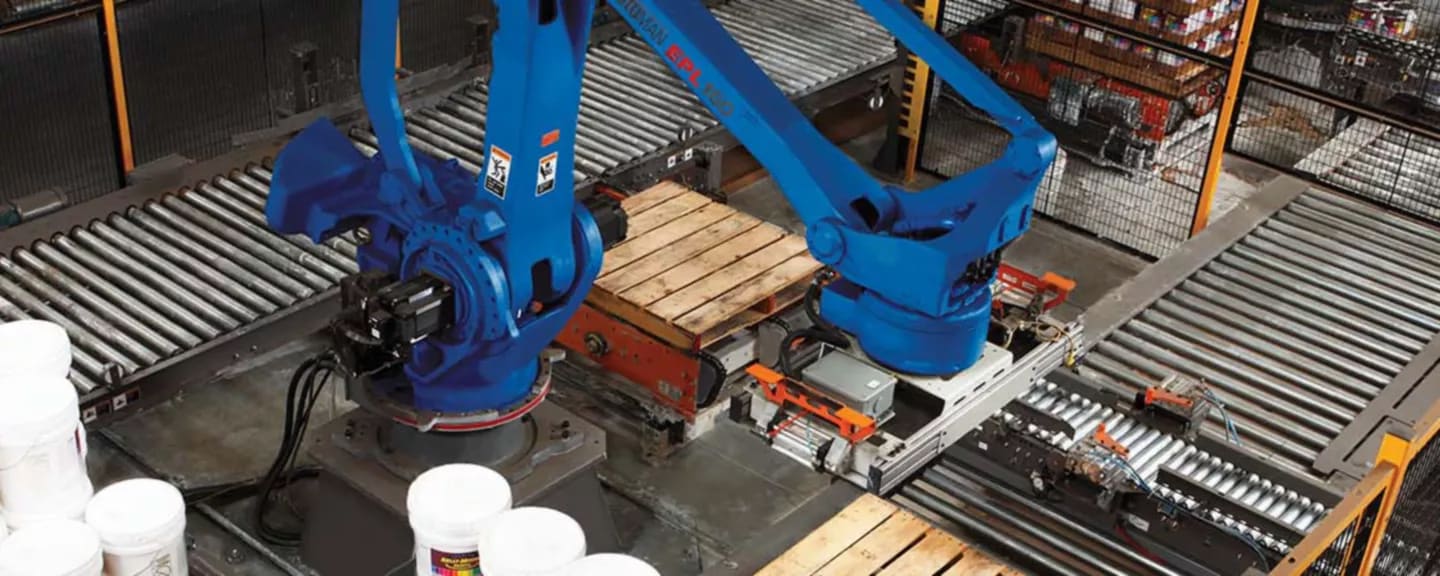Honeywell explains why limit switches remain one of the most popular sensing solutions in safety and control applications despite the widespread availability of electronic, non-contact sensing solutions.
Pamela Davis, Senior Customer Marketing Specialist, Honeywell

Limit switches have been widely employed as contact position sensors in safety and control applications spanning the industrial, commercial construction, transportation, and white goods industries for many decades. Originally used to define the limit to which an object could travel before being stopped, limit switches are electromechanical devices used to send a digital signal to a control system to produce an automated action. Today, they are widely used to sense the presence or absence of an object in a host of demanding indoor and outdoor applications including industrial control systems, material handling equipment, packaging machinery, process equipment, and machine tools, as well as automated parking facilities, agricultural equipment and vehicles, and construction equipment.
Limit switches have a long-standing reputation for consistent, reliable, cost-effective, and straightforward operation; so much so, in fact, that new variations tend to further improve upon their mechanical integrity, longevity, and dependability — employing more robust contact materials and mechanisms or improving environmental resistance and ease of use — rather than amend the core technology. As such, despite the widespread availability of electronic, non-contact sensing solutions including proximity, photoelectric, capacitance, and ultrasonic sensors, limit switches remain one of the most popular sensing solutions in safety and control applications extending across multiple markets.
Limit Switch Operation
When the actuator of a limit switch has traveled a sufficient distance, the electrical contacts within the switch are actuated and change state. This change is communicated to the control system via a digital signal and, in response, the control system initiates the automated hardware or software action.
There are two main types of limit switches, normally open and normally closed, and three different types of limit switch contacts: momentary contacts, maintained contacts, and positive opening or positive breaking contacts. When a normally open limit switch is actuated, its internal contacts complete or “close” the circuit. When a normally closed limit switch is actuated, its internal contacts “open” or break the circuit. Momentary contacts, also called spring return contacts, only change states during actuation and then return to their normal state. Maintained contacts maintain their activated state until they are mechanically reset, and positive opening or positive breaking contacts remain in their activated state even in the event of a mechanical failure and, as such, are widely used in critical safety applications. Depending on the application and the object being sensed, limit switch actuators can also provide either linear or rotary actuation. They must all, however, be able to establish physical contact with the object they’re sensing.

Diagram of a limit switch with normally open/normally closed contacts
Limit Switch Components

Most industrial electromechanical limit switches contain three core components: the operating head and actuator, the switch body, and the contact block.
- The Operating Head and Actuator contact the object being sensed and are fasted to the switch body. The operating head can be rotated in 90° increments for flexible installations, and the actuator, or lever, of the limit switch can be locked in any position spanning a full 360° around the shaft.
- The Switch Body contains the contact block and the integral threaded conduit.
- The Contact Block contains the switch mechanism with the terminations for the electrical connection (often terminal screws).
However, as applications for these proven contact sensing solutions continue to expand globally, limit switch designs continue to improve. Newer components available in select limit switches include normally closed positive opening contacts that are forced open through direct mechanical linkage within the limit switch when actuated to ensure that the contacts remain open. Further modifications to newer limit switch designs include fluorosilicone seals for low-temperature applications down to -40°C. In addition, while most industrial limit switches come equipped with an integral threaded conduit, suppliers including Honeywell also offer prewired solutions for select applications.

Limit Switch Advantages
Limit switches remain amongst the most popular contact position sensor solutions due to the numerous advantages they offer, including:
- Consistent, reliable, cost-effective, and straightforward operation backed by decades of proven performance in safety and control applications spanning the industrial, commercial construction, transportation, and white goods industries.
- Well-established normally closed and normally open switch technologies.
- A wide variety of actuating head styles capable of accurately sensing most materials.
- Audible confirmation of switch contact actuation via the click produced by either the snap action contact mechanism or a monitor with a digital meter, which also supports quick and easy troubleshooting.
- An extensive selection of limit switches with double break contact designs for enhanced reliability in critical safety and control applications.
- The widespread availability of limit switches with up to four sets of independent contacts.
- An increasing selection of catalog listings with positive opening normally closed contacts.
- A vast selection of ruggedized, environmentally sealed housings designed to meet IP and NEMA requirements for indoor and outdoor applications exposed to hazards including weather, temperature variations, dust, dirt, liquids, chemicals, and high-pressure washdowns.
- The availability of select models designed for compatibility with both AC and DC supply voltages.
- An extensive range of electrical switching capabilities, including power duty loads up to 10 A at 24 VDC and 120 VAC and select variants rated for up to 600 VAC and 300 VDC
- Minimal voltage drop across switch contacts with no significant leakage current.
Limit Switch Considerations
The list of potential considerations for limit switches is significantly shorter, and is typically limited to the fact that limit switches:
- Require actuators to contact the object being sensed.
- Have mechanical parts that may wear out after an extended period and switch contacts that may have a shorter lifespan than solid-state outputs.
- Are not recommended for high-speed counting greater than 200 operations per minute.
Limit Switches vs. Competing Sensing Solutions
Despite the widespread availability of electronic, non-contact sensing solutions including magnetic actuated reed switches, inductive proximity sensors, capacitive proximity sensors, ultrasonic sensors, and photoelectric sensors, limit switches maintain a dominant presence in safety and control applications extending across multiple markets due to the numerous advantages they provide. Here’s how the advantages of and considerations for competing sensing solutions compare to those of limit switches.
Magnetic Actuated Reed Switches
are designed to sense ferrous objects and are actuated by a magnetic field. They generally have a two-piece assembly comprised of the reed switch with the electrical contacts and a separate magnet that is operated by a ferrous target. When a ferrous target upsets the internal magnetic field of the switch, the switch contacts change state.
Advantages
- No physical contact required between the switch and the target
- Hermetically sealed switch contacts keep contaminants out of the switching mechanism
Considerations
- Actuation requires a magnet or ferrous target and relatively precise target alignment
- Limited ability to switch power duty electrical loads
Inductive Proximity Sensors
are electromagnetic sensors that use high-frequency oscillation to sense any metal target and offer slide-by and head-on sensing modes.
Advantages
- No physical contact required between the switch and the target
- No moving parts to wear out
- Supports high-speed counting greater than 500 Hz
Considerations
- Requires constant power
- Generates output leakage current
- Installation, setup, and troubleshooting may require more time
- May require different part numbers for AC and DC supply voltages
- Limited ability to switch power duty electrical loads
- Sensing distance varies with different metals
Capacitive Proximity Sensors
detect targets by sensing changes in capacitance based on the dielectric constant of the target material.
Advantages
- No physical contact required between the sensor and the target
- No moving parts to wear out
- Designed to sense the difference between a lower dielectric constant and a higher dielectric constant material, which allows them to sense a liquid level through plastic, for example
Considerations
- Requires constant power
- Generates output leakage current
- Installation, setup, and troubleshooting may require more time
- Limited ability to switch power duty electrical load
- Must sense from a lower dielectric constant to a higher dielectric constant and be able to accurately identify the dielectric constant of different materials
Ultrasonic Sensors
transmit high-frequency ultrasonic pulses and detect the ultrasonic signals reflected by the target.
Advantages
- No physical contact required between the sensor and the target
- No moving parts to wear out
- Can sense clear, shiny, and opaque surfaces
Considerations
- Requires constant power
- Generates output leakage current
- Installation, setup, and troubleshooting may require more time
- Limited ability to switch power duty electrical loads
- Longer sensing distances may result in unacceptable data delays
- Shorter sensing distances may have unacceptable dead zones
- Air currents and temperature variations may affect the transmission and detection of ultrasonic signals
Photoelectric Sensors
transmit a modulated signal, typically an infrared signal, and detect the signals broken or reflected by the target. They are available in several different variants.
- Diffuse Photoelectric Sensors have one-piece transmitter and receiver assemblies. When the target is present, the transmitted signal is reflected and returned to the receiver.
- Reflective and Polarized Reflective Photoelectric Sensors have one-piece transmitter and receiver assemblies equipped with a reflector or reflective tape used to detect when a target breaks the transmitted signal and reflect the transmitted signal back to the receiver.
- Thru-Scan Photoelectric Sensors have two-piece transmitter and receiver assemblies and detect when a target breaks the signal transmitted to the receiver.
- Convergent Beam Photoelectric Sensors have one-piece transmitter and receiver assemblies, require a fixed distance to target, and detect transmitted signals reflected by the target.
Advantages
- No physical contact required between the sensor and the target
- No moving parts to wear out
- Compatible with short and long sensing distances
- High-speed sensing greater than 500 Hz
Considerations
- Requires constant power
- Installation, setup, and troubleshooting may require more time
- Limited ability to switch power duty electrical loads
- Susceptible to inference from attenuated signals in the local environment, as well as from overhead lighting, sunlight, dust, and humidity
- May not be able to accurately sense clear or shiny targets
Conclusion
Limit switches have dominated the sensing and control industry for many decades because they exhibit consistent, reliable, cost-effective, and straightforward operation in a breadth of applications and environments. Despite advancements in electronic sensing technology and the now widespread availability of competing solutions, limit switches remain one of the most widely employed sensing solutions in safety and control applications spanning the industrial, commercial construction, transportation, and white goods industries because they consistently outperform and offer more advantages than competing solutions.
To keep up with evolving application demands and global certification requirements, limit switch suppliers like Honeywell continue to improve upon this proven technology, developing models with more robust contact materials and mechanisms, enhanced environmental resistance, and added convenience while preserving the mechanical integrity that has made them indispensable in even the harshest environment sensing and control solutions the world over since the 1950s.
RS supplies a vast selection of Honeywell limit switches and has a highly experienced technical product support team that can leverage in-depth knowledge about Honeywell’s product portfolio to help customers choose the right limit switch for their unique application challenges and provide customized support for purchasing through to product installation.
Additional Links:
- Honeywell Products and Resources | RS
- Honeywell Limit Switches | RS
- Hazardous Location Switch Product Applications Presentation
- Honeywell Website







